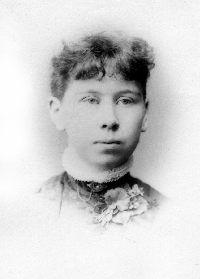

Edith Benson was born April 22, 1867, in Logan, Utah Territory, to Ezra T. Benson and Edith Gollaher. Ezra was an Apostle of The Church of Jesus Christ of Latter-day Saint and the great-grandfather of the Latter-day Saint prophet of the same name. Ezra crossed the plains eight times on missions and to bring the Saints to Utah, served in the legislature and numerous other civic organizations, had mills near Tooele and in Logan, and presided over the Saints in Cache Valley in the early years. Elizabeth’s family joined the Church when she was a small child and was driven with the Saints, first from Missouri and then from Nauvoo. They crossed the plains in 1849, likely in one of Ezra’s companies. Elizabeth became Ezra’s plural wife in Great Salt Lake City in 1853. They had seven children total, Edith the next to youngest. Ezra died suddenly on September 3, 1869, at the age of 54, leaving Elizabeth a widow at the age of 37. Edith was just 2.
Edith’s daughter Karma Parkinson writes that the Bensons’ life was difficult after that. Elizabeth “worked hard taking in boarders and sewing for people and doing anything she could to make a livelihood.” Elizabeth developed rheumatism, which made things all the harder. “One of the brothers would stay with the sick mother while the other boys worked in the canyons and the smaller children were in school. It was a great worry to have these young boys driving into the canyon to bring out the winter supply of wood, and it was always a relief to see them coming home.” When “Edith was twelve years old, she and her little sister Lizzy had to do all the housework between school hours. On wash day they would get up early and scrub the dirty clothes on a corrugated washboard, then boil them in soapy water, then they would put them in a tub of clear rinse water and let them stand until after school, when they would rinse them, wring them out and hang them on a line to dry. Edith said she scrubbed clothes and washed dishes when she was only ten years old and was too small to reach the table without standing on a chair.”
Edith was baptized November 25, 1884, in the Logan Temple at age 17. This was most likely a rebaptism, common in those days as a way to renew one’s covenants. About a year later Edith got a job helping out in the homes of William B. Parkinson, a doctor who had just moved to town. William had two wives, two homes, and six children. We don’t know anything about her courtship, but Edith became William’s third wife on January 27, 1886, in the Logan Temple.1 Edith is pretty in the photos, with round eyes, petite nose, receding chin, and full, wavy hair. Karma describes her as shy but friendly. William, who she says was studious and ambitious, “was a very handsome man. He had beautiful, wavy, dark hair. . . . He wasn’t very tall.” William was born in Bradford, Yorkshire, England, on April 4, 1852, to John Parkinson and Mary Woffindin, Mormon converts, and crossed the ocean with them as a small boy. John’s family was active in the Church in St. Louis but headed for Oregon instead of Salt Lake City. William was orphaned there at the age of 10, but by age 16 he made his way to Morgan, Utah. He later went east for training and was one of the first generation of medical-school-trained doctors in Utah. Karma says, “Father was a self-made man.”
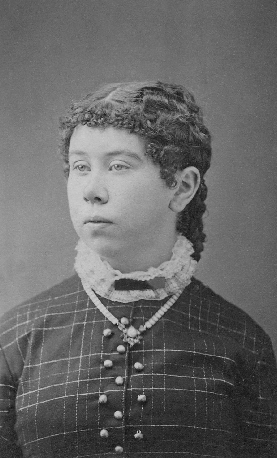 |
| Edith as a young woman |
Plural marriage was a religious principle, and William was obeying his conscience, but regardless he had to keep on the move to avoid being arrested for polygamy. Soon after he married Edith, he took her to Pilot Rock in eastern Oregon and began a medical practice there. He left his other two wives in Cache Valley, so he and Edith had a kind of honeymoon together as they started their family. Fred Benson, their oldest child, was born here on January 8, 1887, as was their second, Veda Benson, on September 20, 1890. (William was a big reader on all sorts of subjects. Likely he got the name Veda from the Hindu scriptures.) They returned to Logan in 1888, and their son John Benson (Jack) was born there on July 11, 1890. Karma says that during the next period William rotated between his wives, spending a week at a time with each.
Edith and William had four more children in Logan over the next ten years: Ezra Benson (or Ben, 27 Apr. 1893, Logan), Karma Benson (who also had a Hindu name, 30 Sep. 1896, Logan), Wallace Benson (3 Jul. 1901, Logan), and Don Benson (17 Aug. 1903, Logan). William married a fourth wife in 1890. His second wife, Clarissa, died in 1903 before all her children were grown. Edith took in her son Marcus (b. 17 Apr. 1886), which with Fred, Jack, and Ben, gave her four teenage boys at home. William lived just with Edith now. Karma writes: “I often wondered how my mother ever survived those days with all that big family and four big boys who were full of life and always getting into mischief with nothing much to do but loaf around. One day Mark, Fred and Jack all came home drunk. She sent them all upstairs to sober up and locked the door. I thought they would knock the house down.” In 1905, William bought a farm in Cornish, about 16 miles from Logan, and sent his oldest son and his wife and a couple of the older boys to live there to give them something to do. Lorna England Bingham, a granddaughter of William’s, writes, “They did not turn out to be very good farmers, as they had no training for it, but from their reports, [they] enjoyed it.”
Edith’s family lived at first on 1st South and 1st West in a little log house that had belonged to Edith’s mother. In about 1901 William built Edith a new house on the same lot. Karma describes it as “well built” and writes: “We were proud of our big red brick home. The front rooms were really nice. There were two large living rooms together and a big dining room with a built in dish cupboard. I remember when a kerosene lamp set in a bracket on the wall. There was also a beautiful large coo-coo clock with long chains to wind it with heavy weights on the end of them. On the hour the little bird would come out and coo-coo once for each hour. We all loved that clock.
“There was a large coal stove in one corner of the back living room where we all gathered in the evenings. Often there were friends and relatives there.”
The house lacked adequate storage space. Karma calls the long, narrow hall that connected the kitchen and bathroom a “nightmare.” “There was a clothes rack along one side of it that was always full of clothes, so we could hardly walk thru. . . . [There was] no storage space or place for vegetables so we kept vegetables and fruit under the floor on the ground. Usually when it was time to prepare dinner I was elected to take up the board in the floor in this dark hall and practically stand on my head and spear potatoes with a long handled fork. Sometimes I would have to get down into this area to get the fruit and vegetables needed. . . .
“I wonder how an architect could ever design a nice home and omit so many conveniences. And I also wonder why the folks later built a big screened porch across the back of the house instead of digging a basement. We had to keep our bottles of fruit in mother’s big closet off her bedroom upstairs. She would make jams and preserves in large quantities and put them in big earthen crocks and put them on the floor in this closet. If there wasn’t a lid for the crock she would tie a piece of brown paper over the top of the jar and when we needed jam we would take a dish and spoon up there and dish it out. Needless to say it would get dripped on the floor at times, besides on the clothes hanging all around the sides of this closet.”
The upstairs had four bedrooms. One was for Edith’s mother, who until her death in 1903 stayed part of the time with Edith and part of the time with her youngest daughter, Lizzy Owen, in Wellsville. The girls’ room had a large closet full of bedding and sacks of various things. Karma remembers: “What a hay day when house cleaning time came around. This closet would be emptied all out in my room and it was a two day ordeal. I would have a hard time finding my bed that night, but I always had fun going through all the treasures of yesteryear. The hair flowers of grandma’s and her old silk dress and neckerchief, things that had belonged to mother’s sister Luella, who died when she was a young woman, and patchwork quilts that grandmother had started and never finished . . . , stockings that were partly knit with the needles still in them and knit lace. . . . Mother never threw anything away, so these things were all put in mothballs and carefully returned to their places.” The boys had a room, and the fourth room belonged to Edith and William. “Father and mother had two big beds in their room. Father slept in an old wooden folding bed. In the morning it was made and pushed up. Then it looked like a big tall wardrobe.” This had been used in his hospital before and proved to have bedbugs when he first brought it home. These soon spread to the other beds, to the family’s horror. “We washed and scrubbed and poured turpentine all over the springs and in all the cracks and shot bed bug powder all over the place. Finally they were all exterminated. Of course we never did mention this matter because it was a disgrace. . . . I can remember looking at a big enlarged picture of one of our ancestors that hung in mother’s bedroom. There was a big bed bug under the glass that never moved. It was caught there and remained to remind us of what we had once experienced.”
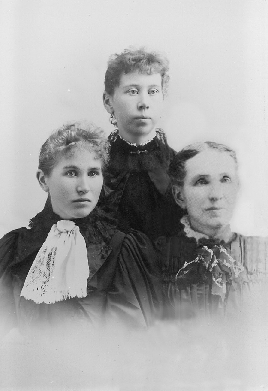 |
| Edith (center) with her sister Lizzy (left) and mother Elizabeth (right) (original photo water-damaged—Elizabeth inset) |
The house had indoor plumbing but only on the ground floor. Their one bathroom made for real congestion on school days. Since the bedrooms were all upstairs, they kept chamber pots under the beds. Karma remembers: “It was my responsibility to take a bucket upstairs each morning and empty these vessels and wash them out and keep them clean. This I detested. Thanks for the bathrooms we have now.”
The upstairs also had no heat. “Next to the dining room was the kitchen with the big coal range. We used to let the coal burn out until just red coals remained and then we would pick up a slice of bread with a long handled fork and hold it over the coals till it was toasted brown. There is no toast so good and no smell as pleasing as the aroma from bread baking.
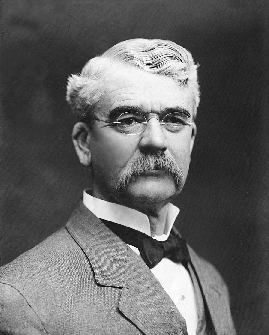 |
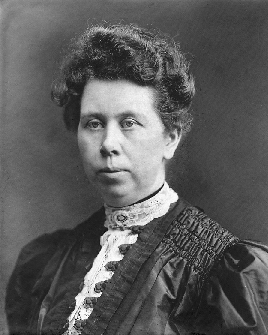 |
||
| Matched portraits of William and Edith | |||
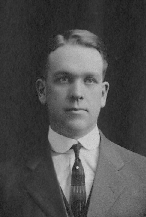 |
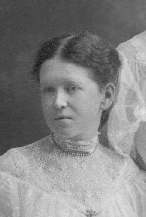 |
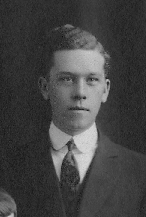 |
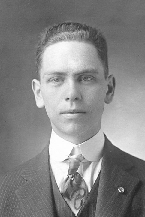 |
| Fred | Veda | John | Ben |
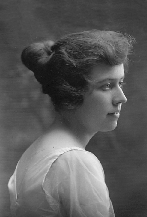 |
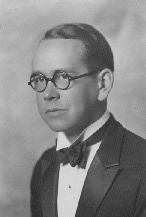 |
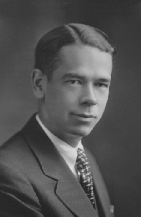 |
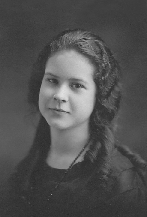 |
| Karma | Wallace | Don | Edith |
“We used live yeast a certain old lady would give us or sell a start, about a cup full. We would put this in a bottle and add some potato water and sugar and let it set till it worked. Then it was ready to mix with. We would stir it up and use all but about a cup full for the next start. This start would last for years. We would mix our bread at night and it would be up to the top of the pan by morning in time to make a pan of biscuits for breakfast and five or six loaves of bread for the coming days. . . .
“The memory of the good food mother cooked stays with me—the doughnuts she fried in the big round bottomed, three legged black kettle, that sat right down on the coals, the cinnamon rolls, they were so good right out of the oven, the strawberry short cake and jelly tarts—I’ve never tasted any to compare.
“There was always something good to eat in the old pantry. That was the place I headed for after school to find something to satisfy my hunger, and I often brought my friends in for a piece of pie or cake.
“We usually had dinner about 3:30 when everyone was home. There was always a nice white table cloth. . . . They were made of linen and it took hours to iron them. . . . There was a big family and lots of dishes. I loved mother’s scalloped potatoes, but how I hated to clean those pans they were cooked in. We didn’t have the scouring pads that we have now.” Karma notes elsewhere: “We usually had a hired girl in those days. . . . They were glad to be paid and come and help with the housework. Mother usually had someone to do that.”
The family was musical. “We had a nice piano in the front living room, or parlor as we called it. Veda played very well. The thing I remember loving the most was going upstairs to bed at night and listening to the lovely music Veda played until I went to sleep. . . . There was always music in my mother’s home. Father loved to hear the piano and to hear my brother Ben sing and Wallace play the violin. [My sister] Edith also learned to play the piano. . . . As soon as the Edison phonographs came out father bought one and had many good records he enjoyed listening to.”
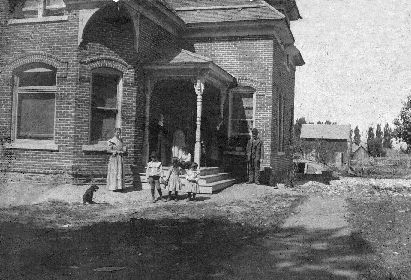 |
| The family home at 69 South First West in Logan |
The Parkinson’s lot came originally from Edith’s mother, and the lot next to it went to Edith’s sister Lizzie. “Father built mother’s home on her lot and later Aunt Lizzy sold hers to a company that built a public dance hall on it. It was very close to our house, just a driveway between. This hurt my parents terribly. The sanctity of our home was ruined. We had no privacy.
“It was noisy on dance nights. Drunken boys would prowl around at night and get together in groups. I was just a young girl then so it was all very interesting to me. . . . I would go up in my bedroom in the summer time and could look out of my window down at the dancers and see who was there and wish that I were, and then I would go to bed and listen to the music until I dropped off to sleep.”
William had a busy practice, and he used his horse and buggy (and later his automobile) to make rounds all over the valley. Logan had two phone systems at the time, and the Parkinsons subscribed to both of them. Each evening, William would unplug his two phones, carry them upstairs, and plug them in again so he could take calls during the night. From the time they were married, William traveled regularly to the East to take courses to improve his skills. Edith and William had one more child, named Edith Benson, on January 25, 1909, in Logan, for a total of eight. Between his four families William had twenty-four children. Karma says the family was harmonious. Her mother was especially close to the second wife, Clarissa. “She had about the same number of children as mother did. They were very good friends. My mother was very fond of her.” Clarissa and the first wife, Elizabeth, who were both somewhat older than Edith, had lived together in the same house for many years but now had houses of their own. Little Karma liked to visit the other wives, whom she called “Aunt.” Elizabeth used to give her apples, and the fourth wife, Margaret, had wonderful flower gardens. Clarissa died young. Elizabeth, who lived with two older daughters, developed diabetes and went blind. William and Margaret were later estranged, and Margaret, who had health problems, went to live in Oregon. Edith’s health also deteriorated as she aged. Her hip gave her such trouble after her younger children were born that when little Edith came along, Veda, age 20 and still at home, took on the care of the baby.
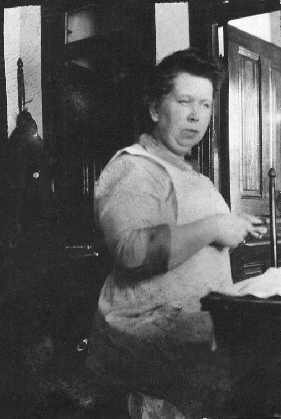 |
Karma says: “Mother was a very warm, friendly person, but shy. She had lots of friends. People liked to be with her. I loved to sit and listen when her friends came to talk with her. . . .
“There were always friends and relatives visiting in our home, sitting around the old coal heater in our living room. My half brothers, who were married and lived out of town, always came to visit mother when they came home. She had a keen sense of humor and enjoyed a good joke. My brothers always saved their jokes to tell her.”
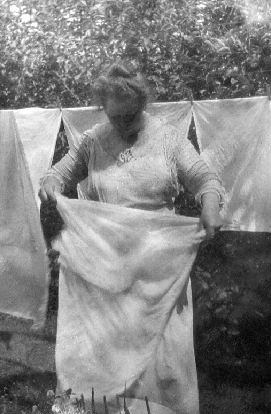 |
Karma notes: “She was deprived of a formal education, but she was refined and a perfect lady. Her diction was flawless and she taught us to speak correct English. She had a good philosophy and an abiding faith in the gospel of Jesus Christ. One would think she had obtained a degree in psychology. She was a natural psychologist and would say, ‘You are as sick as you think you are. Your illness is all in your mind.’ She felt that our minds controlled our feelings to a great extent and that if we thought right we would be alright.
“She had lived polygamy and believed it was God inspired and taught me to feel the same way. I can remember her telling me of a dream she had at the time it was hard for her to live this law. She dreamed that she went to a meeting that was held at the Tabernacle and her father, one of the apostles, was sitting on the stand. There was a vacant seat next to him and he motioned to her to come up and sit there by him. She always felt that she would be rewarded by being with her father in the next life, because she was the only one of his 36 children who lived this divine law.2
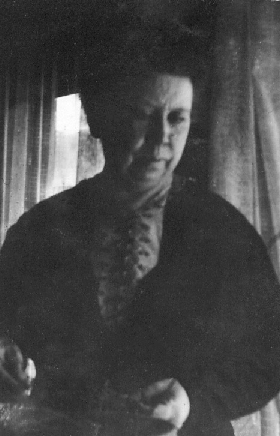 |
“Mother always had a little saying for every occasion that she had learned from her mother. When I got married she said, ‘Now remember, Karma, stand up to the manger, hay or no hay.’ We often thought of that because the time came when there was not much hay, but we always managed somehow or someone would come to our rescue, so we never really suffered. During the great depression I often longed for some of the little extras.
“When [a family situation later in life] became quite a trial to me, Mother said, ‘It’s just a test the Lord has for you to see what kind of stuff you are made of.’ And when I thought that I had more troubles than I could stand, she would say, ‘The back is always made for the burden, you will make it.’ This advice really helped me over the rough spots.
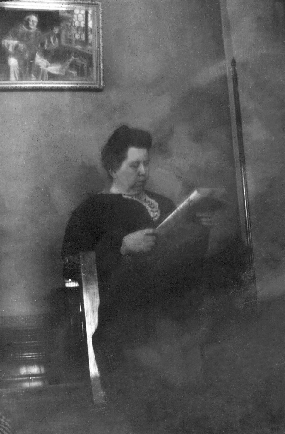 |
“Here are some other cliches of hers. ‘You can lead a horse to water, but you can’t make him drink.’ ‘I’ll put a bug in his ear.’ ‘That’s the word with the bark on it.’ ‘I couldn’t see for looking.’ ‘As plain as the nose on your face.’ ‘As cute as a bug’s ear.’”
Karma said that her father was studious and not so talkative. “Mother talked more and visited with us more. The feeling I got from talking with her was that she believed all of the principles of the gospel sincerely. . . . Mother wasn’t a public woman at all. She was very shy and backward. She was just a home person. But she did a lot of good. . . . She had a strong testimony of the gospel.”
William went to Europe in 1914 to take a course in diseases of the eyes, ears, nose, and throat, and was there when the war broke out. During his return voyage, England declared war on Germany, and suddenly the news was full of ocean liners being pursued by enemy cruisers. Karma writes: “Those were tense days. For several days we didn’t hear anything and then one day a messenger boy came with a wire from father stating that they had landed in Canada and they were alright. He told us later that the submarines had chased them. They had darkened the ship and left their course so were saved. How grateful we were.” During the war, William had the job of examining all the boys drafted into the army. “When the flu epidemic hit in 1919 he worked day and night. Those were terrible days. Every day someone called to tell mother of the death of some dear friend or relative. We had to wear masks over our faces if we went out in public places and then it got so bad that all schools and places of entertainment were closed. People who were well enough were asked to go into homes and help those who were stricken. . . . My half sister Alice was expecting a baby and she was stricken and was buried with her baby, leaving a little boy.” That spring Edith’s son Ben died of the flu at the age of 27. He had been a medical student at the University of Utah and was known for his baritone singing voice. “They were planning to record his voice, which was a new thing at that time.” “We couldn’t have a funeral. Friends came in the house one at a time to view the remains and stood on the lawn while we held a short service, with the speakers on the front porch and our friends and relatives standing on the lawn.” William wore himself out treating flu patients, and he took the deaths of his children hard. He himself succumbed to the flu and never recovered, dying of complications 14 months later on November 9, 1920.
A few years later Edith grew ill, they weren’t too sure with what—Karma thought it might have been cancer. Veda (together with Don and little Edith until they left home) cared for her. Karma and her husband Bernice moved in for a time. Bernice had a talent for lively humor. Karma writes: “In spite of mother’s illness, which was very sad, we had lots of fun when Bernice was there. He would keep up our morale. It was hard seeing mother gradually get thinner and more weak and finally so dizzy she could not walk or sit up anymore and had to give up and stay in bed.” Karma lamented that the house had no bedrooms on the ground floor. “It was so hard to take care of anyone who was ill if we had to keep them in bed upstairs.” Edith was sick for 15 months, dying February 11, 1925, at age 57, in Logan. Karma reflects: “It would have been lovely to have had a grandmother for our children. She would have been such a good one.” Edith is buried in the Logan cemetery, not far from Clarissa and opposite Elizabeth from William.
Notes
1. William and Edith’s marriage is missing from the Logan temple records. William’s temple book, begun in August 1927 and kept by his daughter Lizzie Parkinson, gives their marriage as follows: “Jan 27th 1886 Sealed Logan Temple by M. W. Merrill.” The Logan Temple record does show that Mariner W. Merrill, later an Apostle, performed sealings in the temple that day. It is possible the marriage is not in the regular register because of the persecution the Mormons were suffering over polygamy at the time.
2. Karma’s statement that Edith was the only one of Ezra T. Benson’s 36 children to live polygamy appears to be a little off. The official history of the Benson family lists just 35 children (see reference under Elizabeth Gollaher’s history below). And according to Ancestral File, Edith’s half-sister Grace Ann Benson Price also lived in plural marriage.
Sources